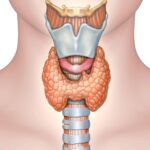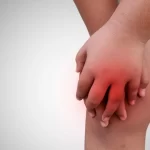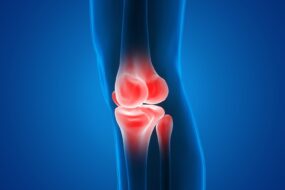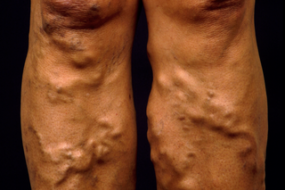Syringomyelia is a condition characterized by a fluid-filled, gliosis-lined cavity( syrinx) within the spinal cord.
Syringobulbia- when it affects the brain stem
Most lesions are found between C2 and T9. However, they can extend further up or down More common in males, especially post-traumatic
Etiology;
1. Arnold Chiari malformation type 1- the most common cause
2. Other congenital anomalies- tethered cord, Klippel- Feil syndrome
3. Post-traumatic
4. Post-inflammatory- transverse myelitis
5. Post-infectious- meningitis
6. Spinal neoplasms- ependymomas, hemangioblastoma
Pathophysiology;
An obstruction in the central canal of the spinal cord leads to impaired CSF flow. A syrinx forms that damages the anterior white commissure and crossing fibers of the lateral spinothalamic tract( which affects pain and temperature).
Expansion of the syrinx can damage lower Motor neurons, upper motor neurons, posterior column, and the medulla.
Clinical presentation
- Maybe asymptomatic and discovered incidentally on imaging
- Progressive central cord deficits occur with a cape-like distribution( neck, shoulders, and arms) of sensory loss, dysthetic pain, muscle atrophy, fasciculations, and areflexia
- Spastic paraparesis of the Lower limbs may occur
- Respiratory insufficiency
- Autonomic disturbance
- Others- Charcot joints, painless ulcers of the hands, thoracic scoliosis
- Syringobulbia- tongue atrophy, dysphagia, nystagmus, palatal and pharyngeal weakness, loss of pain, and temperature in the trigeminal distribution
Diagnosis
1. MRI- it will typically identify it and adjacent pathology such as a tumor
2. CT scan or Xray of the spine- identifies scoliosis and anatomy of the spine
Management
-Conservative management for those without progressive symptoms
-Supportive management- analgesia, baclofen for spasticity, physiotherapy, psychotherapy
-Surgical management;
- Surgical decompression with fenestration and or shunt placement- for those with intractable central pain and neurologic deterioration
- Removal of a tumor if present
Neurologic deficits usually stabilize after the intervention and sometimes improve.
Differential diagnosis
- Anterior spinal artery syndrome
- Brown sequard syndrome
- Multiple sclerosis
- Amyotrophic lateral sclerosis
- Cervical disk prolapse












